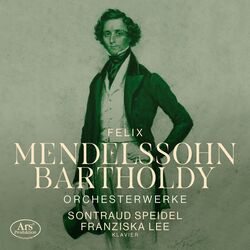Mendelssohn hat rund 20 seiner Werke für Klavierduett bearbeitet, und davon sind einige auf diesem Album zu hören. Als begabter Pianist gelang es dem Komponisten, die Orchesterstimmen sehr gut in die Klaviertranskription einzubringen, ohne das Ganze zu überfrachten. Mehr noch: er hat die Musik pianistisch so behandelt, dass man das Orchester in keinem Moment vermisst, sondern sich am Klavierklang erfreut.
Neben Mendelssohns beliebter Hebriden-Ouvertüre, die – wie die anderen kürzeren Stücke – mit vielen Nuancen, Akzentuierungen und passendem Rubato absolut rhetorisch gespielt wird, ist die Dritte Symphonie das Hauptwerk des Albums. Sie erklingt hier in einer Frische und mit einem Elan, die der Interpretation Referenzcharakter geben. Die Musik fließt pulsierend, bewegt, expressiv und spannungsgeladen.
Der Klavierklang und die Aufnahme von Toygun Kirali sind erstklassig.
Mendelssohn arranged about 20 of his works for piano duet, some of which can be heard on this album. As a talented pianist, the composer managed to integrate the orchestral parts very well into the piano transcription without overloading the whole thing. What’s more, he handles the music pianistically in such a way that you never miss the orchestra, but rather enjoy the piano sound.
Besides Mendelssohn’s popular Hebrides Overture, which – like the other shorter pieces – is played with many nuances, accents and appropriate rubato in an absolutely rhetorical manner, the Third Symphony is the main work on the album. It sounds here with a freshness and verve that give the interpretation a reference character. The music is pulsating, moving, expressive and full of tension.
The piano sound and the recording by Toygun Kirali are first class.




















